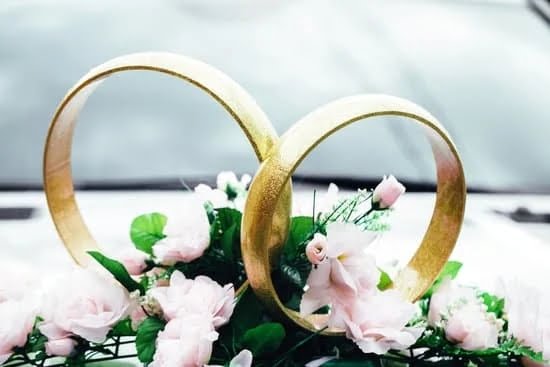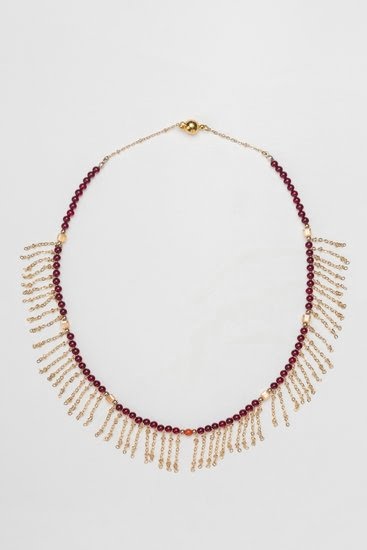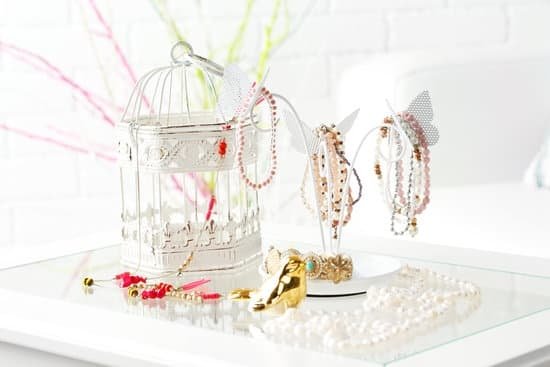Introduction
Indian jewelry has a rich history that is deeply entwined with the culture of the country. Dating back more than 5,000 years, it has evolved from simple, rustic pieces to intricate works of art. Its impact on the fashion industry and its influence on global trends have been especially remarkable in recent times.
Fine Indian jewelry is typically made from precious metals and stones such as gold, silver and diamonds. Artisans use a variety of techniques to craft elegant designs including enameling, stone setting, casting and forging. Although styles vary across regions and cultures, traditional motifs such as leaves and animals abound throughout Indian jewelry designs. Notable ancient pieces like the astonishing Narmada necklace from the Mauryan period demonstrate India’s long-standing heritage in jewelry making.
Due to centuries of invasions and migrations, today’s Indian jewelry is heavily influenced by Persia, Portugal, Britain and other major countries that interacted with India in the past centuries – making each piece both unique and sophisticated. Popularity has grown outside India too as celebrities such as Aishwarya Rai Bachchan have worn Indian jewelery on national television or at prestigious events like Cannes Film Festival or Academy Awards further endorsing its alluring beauty in front of a global audience.
Nowadays manufacturers take extra care in creating contemporary pieces with elaborate designs which echo their roots while staying up-to-date with cutting-edge trends for customers around the world. Choice of materials varies widely depending upon personal preferences – from glamorous diamonds to subtle pearls; from bright colored gemstones to classic rubies Indian jewelers are able to create timeless masterpieces that never go out of fashion. From everyday rings to wedding sets; ladies accessories (like bangles) to necklaces – finest quality Indian jewellery has something for everyone!
The Allure of Gold
Fine Indian jewelry is renowned for its beauty, craftsmanship, and allure. A large part of this allure comes from the use of gold in traditional and contemporary Indian designs. Gold is a prized metal across India due to its inherent value and ability to be crafted into exquisite pieces of jewelry.
Gold is often used in fine Indian jewelry due to its spiritual associations. The use of gold can be found in many religious festivals and ceremonies in different parts of India, highlighting its strong cultural connections. Furthermore, some Hindu texts equate gold with splendor and power, making it an invaluable material for the highest quality jewelry production. Gold was also seen as a safeguard against wealth loss due to turbulent times or natural disasters by individuals during ancient times because of its undeniable value when exchanged for goods or services.
In addition to its spiritual ties, gold has also been used throughout history to denote status based on which social class one belonged to. People belonging to higher-ranking classes often chose adornments made from heavier and finer gold as a sign of their wealth, compared to middle or lower-class individuals using lighter types for simple adornment purposes. As such, higher demand soon developed among the wealthy for ever more intricate designs inspired by elegant filigree work or those set with gemstones such as diamonds or rubies. This further highlighted the importance of gold within Indian culture as it was used to symbolize ceremonial functions or important rites of passage such as weddings or celebrations like Diwali with ornate sets that examine a variety of shapes endowed with golden crafting techniques that have centuries old roots tracing back in time!
Silver Swirls
The use of silver in Indian jewelry dates back centuries. From intricate temple ornaments to modern fine jewelry, the beauty and impact of silver can be seen across different styles of Indian jewelry design. Silver’s intrinsic brightness and pureness make it a popular choice among both traditional and contemporary practitioners. It can also be used in combination with other metals to give artworks added character.
Silver has always been synonymous with wealth, nobility and strength due to its precious nature, making it an ideal material for sumptuous adornment pieces since ancient times. Indian artists combine this richly embellished metal to make fine artistic creations, inspired by traditional motifs such as plant tendrils, squares and triangles. Nowadays, through modern technological innovation and craftsmanship techniques we can witness daring twists on basic designs illuminating to fascinating “swirl” patterns. This form of elegant work allows for extreme creative freedom within the parameters of traditional aesthetics, still utilizing ancient filigree traditions whilst creating sculptural forms within silver works which emulate the organic movement found in nature through the artist’s skillful hands.
Rajasthan struts some of the most talented artisans who are admired for their mastery over soft metals like silver and copper; bringing life-like figures produced from raw materials transformed into beautiful works of art with a range of ancient tools only they know how to use. Therefore when it comes to owning exquisite pieces carved out of these precious metals, Rajasthan represents the ultimate source of creativity and history intertwined through these exceptional artifacts made by expert craftsmen whose tribal origins proudly reflect on their masterpieces.
Setting New Standards
Fine Indian jewelry setting is an ancient art form that has been practiced for centuries. From the detailed and ornate traditional gold settings to more modern designs in silver, a wide variety of styles can be found in Indian jewelry. Adorning traditional pieces with intricate gold or silver settings, known as jaali or jirat, is an ongoing trend that continues to attract many admirers. Jaali and jirat commonly take the shape of delicate mesh-like lattices made from different metals. These settings are often handcrafted to create wearable pieces of art.
Various techniques are used to craft fine Indian jewelry setting, such as embossing, etching, beading, soldering and stitching – often combined with gemstones and gold or silver filigree work. Colorful stones such as lapis lazuli, malachite, marble and turquoise help create unique looks varying with each piece. One example of this artistry is Kundan style jewelry which comes from the Mughal period of India; it uses enameled settings where precious or semi-precious stones are embedded at various points accentuating a look that surpasses most other types of jewelry. Often referred to as the “king of gems,” Kundan jewellery is a popular choice among many women today – used both for its symbolism and practicality.
Today’s Indian jewelry setting has evolved greatly since its inception centuries ago; now incorporating several new avant-garde methods while being true to its traditional roots like never before seen before. For example some contemporary designs incorporate technologies such as laser cutting and 3D printing into their settings giving them an edgy modern twist on classic silhouette designs — adding vibrancy and color to once simple designs enhanced by perforating intricate cuts on the pieces’ surface along with vibrant enamels creating astonishingly beautiful patterns that mesmerize onlookers from afar. Additionally, great use of colored stones such as rose quartz alongside rubies has resulted in breathtakingly beautiful wedding sets sure to make any bride stand out from the rest at her special day!
Precious Stones
Fine Indian jewelry often features stunning gemstones encased in beautiful precious metals. For centuries, Indians have adorned themselves with stones such as diamonds, rubies, emeralds and more, each type of stone having a unique meaning or symbolism behind it. Rubies are known to symbolize purity and are believed to bring luck and stability; sapphires stand for truth and faithfulness; garnets for love and endurance; topaz for wisdom and intelligence. Jewelry makers in India have used these rare stones to craft gorgeous pieces with hidden meanings that show individuality, creativity and self-expression.
Beyond their symbolism, Indian jewelry featuring precious gems has an interesting history. The tradition of wearing gemstones extends back thousands of years, with Archaic people stringing various stones on vines or beading them onto leather straps to wear around the neck or wrist. The oldest gemstone ever discovered is a hessonite from Sri Lanka estimated to be more than 2 million years old! Even the ancient kings like Raja Bharat Vikramaditya were well aware of the power these gems possessed, owning porushe sculptures that were covered in diamond-studded covers. During medieval times fine jewelry made out of precious jewels became incredibly popular among the elite classes as a symbol of their wealth. Even today many Indian families pass down precious pieces of jewelry containing rare gems within their lineages as heirlooms.
From religious significance to historical value, Indian jewelry containing valuable stones continue to embody the values set before us by our ancestors while simultaneously inspiring those looking ahead.
Trending now
Indian jewelry is an inspirational and timeless statement of beauty, culture and tradition. With the increasing variety of styles available today, Indian jewelry has become a go-to item for many occasions. Its unique fusion of traditional designs with modern-style elements has created a luxurious style that transcends seasons and time.
Today, there is a wide range of fine Indian jewelry to choose from, incorporating not just precious metals like gold, silver and platinum but other materials as well such as semi-precious stones, pearls and intricate carvings in glass and wood. From contemporary pieces that make an elegant evening attire to ethnic ones that serve as ideal bridal accessories, you can find the perfect piece for any occasion. Popular trends in Indian jewelry design now include pieces that feature bold yet delicate shapes and futuristic finishes with vibrant enamels against white gold or rose gold backgrounds. For those looking for something truly special, look no further than signature designs by master artisans who specialize in expressing their artistic vision with textured precious metals. Whatever your style is — be it traditional, rustic or modern — there’s bound to be something that speaks to your tastes in today’s world of Indian Jewelry Designing.
Conclusion
Fine Indian Jewelry is a treasure to be enjoyed. Featuring intricate designs and precious metals, it evokes images of exotic beauty, sophistication and luxury. From emperadora sets to chandbali designs and more, each piece has its own story to tell and express an emotion or showcase a cherished memory. Every piece of jewelry carries a unique character that speaks to the observer’s heart and mind. In every creation lies the skillfulness of Indian artisans who have been creating such pieces for centuries, representing captivating cultures from all around India.
Celebrate the timeless beauty of Indian jewels with pieces that are adorned for ages-old celebrations like weddings, festivals, birthdays and graduations. Show your love with fine jewelry that tell stories which will remain in our memories forever. Instill traditions through peaceful adornment using glimmering gems, stunning rings, delicate necklaces or precious bracelets; let each of them serve as reminders of how special every moment can be. With this fine Indian jewelry, you can honor charming cultures while showcasing one’s personality in ways far beyond its value in gold.

Welcome to my jewelry blog! My name is Sarah and I am the owner of this blog.
I love making jewelry and sharing my creations with others.
So whether you’re someone who loves wearing jewelry yourself or simply enjoys learning about it, be sure to check out my blog for insightful posts on everything related to this exciting topic!





